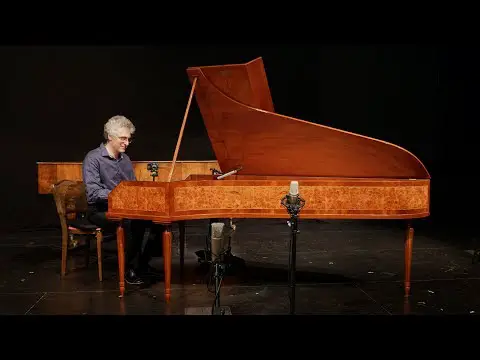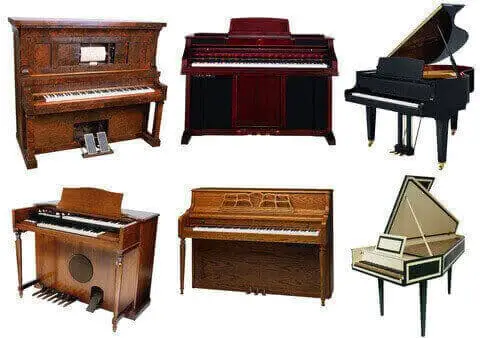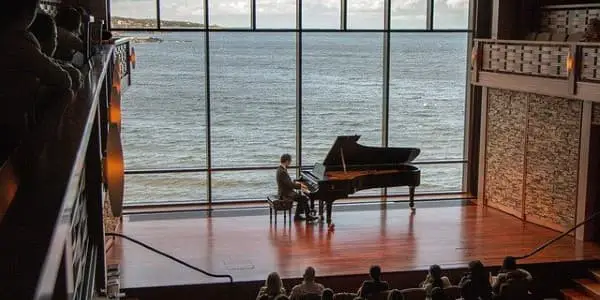- Home
- Piano History
- History of Pianos
History of Pianos: What Keyboards Were Used During the Classical Era?
This article may contain compensated links. Please read the disclosure for more info.
The history of pianos during the Classical era. Two Classical Pianos became popular:
- The Fortepiano was a relatively small instrument with a modest sound. Throughout the Classical period, this early piano became very popular and eventually replaced both the Harpsichord and the Clavichord.
- At the same time, the Square piano was also invented. It later developed into the upright piano during the 19th century.
History of Pianos: The Classical Era Piano Keyboards (1750-1825)
Why did the piano become popular in the classical period?
What happened musically during the Classical era had a big impact on the development and the rising popularity of the Pianoforte.
Some important developments were:
- The use of "Basso Continuo" disappeared, and the popularity of the Harpsichord gradually faded away.
- The orchestra expanded! The classical orchestra now had up to 40 members. (=Louder!)
Like other composers of the era, Mozart, Haydn, and Beethoven wrote Piano Concertos (where the piano is a soloist in the orchestra). This meant that the Forte Piano now had to be improved in both sound and volume, so it could be heard over the now much larger orchestra.
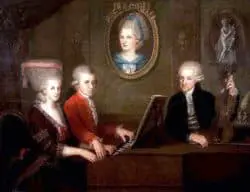 Nannerl, Wolfgang Amadeus and Leopold Mozart (Dad) at the piano.
Nannerl, Wolfgang Amadeus and Leopold Mozart (Dad) at the piano.W.A. Mozart (1756–1791) loved the new instrument and wrote an enormous amount of piano music for it: 27 concertos, 18 sonatas, and lots and lots of other solo piano pieces.
The first pianos weren’t very large. The Classical fortepiano had a keyboard range of about four octaves at first, but gradually got more piano keys. (Modern pianos today have seven octaves plus a third!)
Interesting Fact: Mozart wrote piano compositions for pianos with about five octaves.
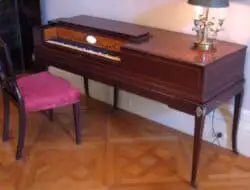 Square Piano 1760
Square Piano 1760The Square piano or "Tafelklavier" was invented by Johannes Zumpe in England in 1766. This was another important invention in the history of pianos.
The square piano was a popular instrument also because of its practicality. You could just close the lid, and it turned into a table. A real space saver!
The square piano paved the way for the first upright pianos developed during the 19th century. The pianos had found their way into the homes of a rising middle class, and more and more pianos were built.
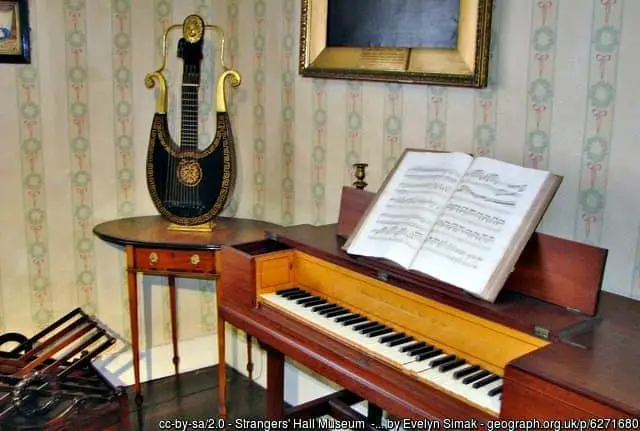 A Square Piano
A Square Piano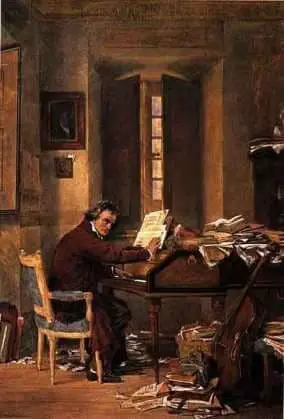 Beethoven at the Piano
Beethoven at the PianoL.van Beethoven (1770–1827) wanted more from the pianos.
He became infamous for breaking the strings all the time, possibly because of his impending deafness.
But not only that, Beethoven craved contrasts, louder sounds, and the Fortepiano, or "Hammerklavier" as he preferred to call it, just couldn't handle it.
It is said that when Beethoven no longer could hear, he took off the legs of the piano. He put his ear close to the piano as he sat on the floor to at least hear the vibrations of the tones.
The piano works of Beethoven show us how the range of the piano keyboard kept expanding since his last piano compositions were composed with a range of about six octaves.
With the piano, and especially with his 32 Piano sonatas, Beethoven explored and expanded the borders of what was possible- and not!
Some of his sonatas have a suggested range that is higher and lower than what existed on most keyboards at that time! Talk about a visionary!
Beethoven's Moonlight Sonata on a Fortepiano
Watch and listen to a beautiful performance of the original version of Beethoven's Moonlight Sonata on a Fortepiano:
